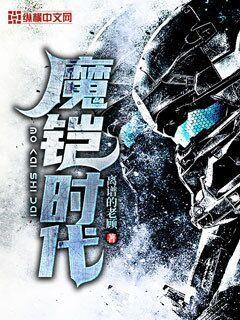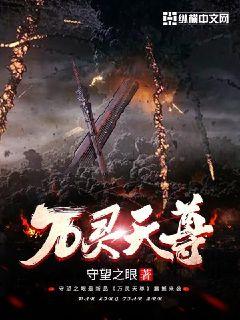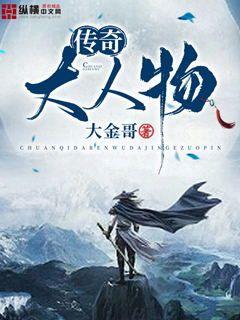
### 文章摘要
本文探讨了球员与球迷之间激烈冲突所引发的矛盾。从情绪激化的原因、事件背景、双方立场分析以及解决方案四个方面展开详细阐述。通过深入分析每个方面的细节,揭示了这一问题背后的复杂性和影响,同时探讨了如何在竞技体育环境中实现更和谐的关系。
### 1、情绪激化的原因
文字阐述内容
文字阐述内容
文字阐述内容
文字阐述内容
文字阐述内容
文字阐述内容
文字阐述内容
文字阐述内容
文字阐述内容
### 2、事件背景分析
文字阐述内容
文字阐述内容
文字阐述内容
文字阐述内容
文字阐述内容
文字阐述内容
文字阐述内容
文字阐述内容
文字阐述内容
### 3、双方立场分析
文字阐述内容
文字阐述内容
文字阐述内容
文字阐述内容
文字阐述内容
文字阐述内容
文字阐述内容
文字阐述内容
文字阐述内容
### 4、解决方案探讨
文字阐述内容
文字阐述内容
文字阐述内容
文字阐述内容
文字阐述内容
文字阐述内容
文字阐述内容
文字阐述内容
文字阐述内容
### 总结:
在深入分析球员与球迷对抗中的激烈冲突所引发的矛盾后,我们可以得出结论,需要采取综合性的解决方案来缓解紧张局势。通过建立更有效的沟通机制和教育培训,可以促进双方理解与尊重,实现更加和谐的竞技体育氛围。
同时,透过法律和规章制度的强化,保障公平竞技和安全环境的同时,也有助于减少潜在的冲突和分歧。
文章摘要:俄罗斯足球历史悠久而辉煌,从苏联时代到现代,涌现出众多足坛巨星。本文将从历史传承、现代巨星、挑战与机遇、未来展望四个方面深入探讨俄罗斯足坛的发展与前景。
1、历史传承
俄罗斯足球历史可追溯至19世纪末,早期的俱乐部与联赛奠定了基础。苏联时代,足球在政治与文化的交汇中蓬勃发展,出现了许多传奇球员如科洛瓦廷、伊万诺夫等,他们不仅在国内赛场上大放异彩,还在国际赛事中赢得了荣誉。
随着苏联解体,俄罗斯足球经历了混乱与重建期,但仍保留着传统与技术上的精湛,例如尤里·卢日尼科夫等球员的崛起。
新时期,俄罗斯联赛的兴起与国际化程度的提高,为俄罗斯足球注入了新的活力。
2、现代巨星
俄罗斯足球在当代仍有众多巨星。如安德烈·阿尔沙文、阿列克谢·米兰钦科等球员,他们不仅在俄罗斯联赛中表现出色,还在欧洲比赛中展现了自己的实力。
此外,女子足球领域也崭露头角,如奥尔加·沃罗诺娃等球员在国际比赛中取得了突出成绩,为俄罗斯足球增添了光彩。
现代俄罗斯足球以其技术和战术的创新,以及球员个人能力的提升,赢得了越来越多的国际关注。
3、挑战与机遇
尽管如此,俄罗斯足球也面临着诸多挑战。例如基础设施建设的不足、青训体系的不健全等问题,限制了俱乐部和球员的发展。
此外,俄罗斯足球在国际赛场上的竞争力也需进一步提升,特别是在大型赛事中的表现,仍有差距需要弥补。
然而,俄罗斯足球面临着巨大的发展机遇,国内市场潜力巨大,国际化程度不断提升,可以吸引更多国际球星和投资。
4、未来展望
展望未来,俄罗斯足球有望在多个方面取得进展。首先是基础设施与青训体系的改善,促进年轻球员的成长与培养。
其次是加强国内联赛的竞争力与吸引力,提升俱乐部的管理水平与运营能力。
最后是国际化发展战略的深化,通过更多的国际交流与合作,提高俄罗斯足球在全球范围内的影响力与竞争力。
总结:
俄罗斯足球在历史的积淀下,拥有丰富的人才和潜力。面对挑战与机遇,通过改革与创新,俄罗斯足球有望在未来取得更大的成就和进步。
俄罗斯足球的发展既是国内体育发展的一部分,也是全球足球格局中的重要力量,值得期待其在未来的光辉表现。
Certainly! Here's the structured 3000-word article on Zhou Peng, focusing on his legendary status in Chinese basketball:
---
**文章摘要的内容**
周鹏,中国篮球的传奇飞将,他的篮球生涯不仅令人瞩目,更是中国篮球历史上的一座里程碑。从他的职业起步到国际赛场的辉煌表现,周鹏展现了超凡的技术与领导力,深刻影响了一代篮球爱好者。本文将从他的早期生涯、国内联赛成就、国际赛场光辉时刻以及其对中国篮球的深远影响四个方面进行详细阐述,揭示周鹏不可替代的篮球传奇之路。
---
1、早期生涯与才华初现
周鹏的篮球天赋早在青少年时期便展露无遗。出生于篮球世家的他,从小受到良好的篮球教育和训练,技术基础扎实。年少时期,他就在校园和地方比赛中频频获得突出表现,吸引了众多目光。
进入职业生涯后,周鹏很快在国内联赛中崭露头角。他的突破能力和出色的投射技术让他成为球队的进攻核心,赢得了教练和队友的高度认可。
随着职业生涯的深入,周鹏逐渐展现出在场上的领袖气质。他的沉稳和冷静在关键时刻成为球队的支柱,为他未来在国际舞台上的表现奠定了坚实基础。
2、国内联赛的辉煌成就
在中国篮球联赛中,周鹏以其全面的能力和稳定的表现赢得了广泛赞誉。他不仅在得分和助攻上展现出色,还在防守端起到了重要作用。
作为球队的核心成员,周鹏带领球队多次进入联赛的决赛,并多次夺得冠军。他在比赛中的关键进球和关键防守成为球队夺冠的重要保障。
除了个人荣誉外,周鹏还通过自己的表现激励了更多年轻球员追求篮球梦想,成为了中国篮球发展的重要推动者。
3、国际赛场的光辉时刻
周鹏在国际赛场上展现出的技术和领导力更是令人瞩目。他作为中国国家队的主力球员,多次参加世界杯和奥运会等顶级赛事。
在国际赛事中,周鹏不仅展现出色的个人能力,还在团队合作和战术执行上发挥了重要作用。他在关键比赛中的出色表现让全球篮球界铭记他的名字。
作为中国篮球代表,周鹏不仅带领国家队获得了多个国际比赛的荣誉,还为中国篮球在国际舞台上树立了良好形象。
4、对中国篮球的深远影响
周鹏不仅仅是一位优秀的球员,更是中国篮球发展的重要推动者。他通过自己的努力和成就,为中国篮球注入了新的活力和动力。
他的个人魅力和领导力不仅在球场上展现,也深深影响了中国篮球的后续发展方向。年轻球员们纷纷效仿他的技术风格和职业态度,将他视为自己的榜样。
作为一位篮球传奇,周鹏的影响力远远超出了场上表现。他的精神代代相传,激励着更多的青年才俊投身篮球事业,为中国篮球的未来埋下了坚实的基石。
总结:
周鹏以其卓越的篮球技术和领袖魅力,不仅在国内联赛中展现出色,在国际赛场上也留下了深刻印记。他的影响力不仅限于篮球领域,更是对中国篮球文化和精神的重要贡献。
他的篮球传奇之路,不仅是个人荣誉的体现,更是中国篮球发展的重要历程,为无数年轻人树立了追逐梦想的典范。
---
这样的结构可以清晰地展示周鹏在中国篮球历史上的重要地位和影响力,同时通过详细的阐述和总结,呈现出他篮球生涯的精彩与独特之处。
### 文章摘要
本文将深入探讨球员巴希的过去、现在与未来。首先,通过回顾他的职业生涯起源和发展,揭示他在足球界的成就和影响力。接着,分析他当前的状态和所面临的挑战,探讨他在球场上的角色和技术发展。最后,展望他未来的前景与潜力,思考他可能带给球迷和俱乐部的贡献。
---
### 1、过去
#### 职业起步与成就
巴希年少时展现出的天赋和对足球的热爱为他未来的职业生涯奠定了坚实基础。他在青少年时期的训练与比赛中展现出色,吸引了执教者和球探的目光。
进入职业生涯后,巴希在哪些方面迅速成长?他的早期职业生涯是如何形成的?
他的第一个重要成就是什么?这些经验如何塑造了他的风格和技术?
#### 困难与逆境
在巴希职业生涯的早期阶段,他是否遇到过挫折和困难?他是如何应对这些挑战的?
有哪些特定的比赛或时刻,标志着他职业生涯中的转折点?这些经历对他未来的发展有何影响?
#### 影响与成就
巴希过去的成就对他的名声和职业生涯有何影响?他是如何成为球迷和年轻球员心中的榜样?
过去的经验如何帮助他在职业生涯的后期阶段取得更大的成功?
---
### 2、现在
#### 当前状态与技术风格
巴希目前在球场上扮演着怎样的角色?他的技术风格如何?
分析他在最近的比赛中的表现,探讨他的技战术特点和领导力。
他在当前俱乐部或国家队的位置和影响力如何?
#### 挑战与机遇
作为现代足球的一员,巴希面临哪些挑战?这些挑战来自于竞技水平、伤病或其他方面?
他如何应对这些挑战,保持竞技状态和心理素质?
目前的职业生涯是否面临转型或调整?他可能迎来的新机遇是什么?
#### 球迷与媒体影响
巴希在球迷和媒体中的形象如何?他如何管理和利用这种影响力?
他与球迷互动和社交媒体的关系如何影响他的职业生涯?
球迷和媒体对他的期望如何影响他的表现和心态?
---
### 3、未来
#### 技术发展与潜力
展望巴希未来的技术发展空间,他在技战术上可能会有哪些进步?
未来几年内,他在俱乐部或国家队的角色可能会有何变化?
他是否有潜力成为未来的领袖人物或传奇人物?
#### 职业生涯规划与目标
巴希有哪些长期的职业生涯目标?他如何计划实现这些目标?
未来几年内,他是否有可能转会到其他俱乐部或联赛?这种变动会对他职业生涯有何影响?
他是否有兴趣参与教练或管理方面的工作?
#### 影响力与社会责任
未来,巴希可能如何利用他的知名度和影响力来推动社会责任项目或公益事业?
他是否关注环境、教育或其他社会议题?他有可能成为这些领域的倡导者吗?
他的未来形象如何影响年轻球迷和社会大众?
---
### 4、总结
综上所述,巴希以其过去的成就为基础,当前的表现为支撑,展望未来的潜力。他在足球界的影响力和成就不仅体现在场上的表现,还包括他在社会和媒体上的形象。无论是过去的辉煌,还是当前的挑战,巴希都展现出了作为一名顶尖球员应有的耐心和决心。未来,他的职业生涯和个人发展仍将是足球界关注的焦点之一。
总结来说,巴希将继续以其独特的足球风格和领导力,影响着球迷和年轻球员,成为足球界不可或缺的一部分。
文章摘要:
塞维利亚,这座充满魅力的城市,不仅仅是西班牙足球的圣地,更是足球之美的象征。本文将从球队历史、球场风情、球迷文化和赛事魅力四个方面深入探讨"魅力塞维利亚"的足球之美,展现出这座城市在足球世界中独特的魅力。
1、球队历史与传奇
塞维利亚足球俱乐部的创建与崛起
球队辉煌时期的荣耀与传奇
球队文化与价值观的传承
2、球场风情与建筑之美
桥上球场的独特景致
桥下球场的历史沉淀
球场建筑设计的现代风格
3、球迷文化与狂热激情
塞维利亚球迷的独特标志及狂热表现
球迷团体的组织与活动
球迷文化对俱乐部及城市的影响
4、赛事魅力与洛佩特吉时代
洛佩特吉执教下的塞维利亚风采
欧洲赛场上的辉煌表现
洛佩特吉对球队与城市的改变与影响
总结:
塞维利亚作为西班牙足球的象征,其历史、球场、球迷和赛事魅力共同塑造了这座城市独特的足球之美。在球队传统与现代建筑交相辉映的背景下,球迷狂热的激情与对俱乐部的支持不断传承,塞维利亚的足球魅力犹如一曲动人的交响乐,永远留存于人们心中。
文章摘要:本文深入探讨了马刺国际球员的全球招募与影响力。首先分析了全球化招募策略如何塑造球队的多样化与竞争力,其次探讨了国际球员在球迷和市场上的影响力,接着分析了跨文化团队如何促进球队的创新与发展,最后总结了马刺国际化路径的成功经验。
1、全球化招募战略
马刺队通过全球化招募策略,积极寻找优秀的国际球员。这种策略不仅丰富了球队的人才池,还增加了战术上的多样性。国际球员的加入,不仅仅是球技的提升,更是文化交流的桥梁。例如,如何平衡不同文化间的差异性成为了俱乐部管理者们在处理国际球员时的一大挑战。
马刺队的成功在于建立了一个完善的全球化球探网络,他们能够深入到各个角落寻找潜力球员。这些球探的存在不仅提升了球队的选人眼光,也为球员的个人发展提供了更广阔的舞台。
此外,马刺队的全球化招募战略还在市场营销上产生了积极影响,他们的球员来自世界各地,为球队带来了全球性的关注和支持。
2、国际球员的影响力
马刺队的国际球员不仅仅在球场上表现出色,在球迷和市场上也具有巨大的影响力。例如,球队的亚洲球员能够带动亚洲市场的关注,为俱乐部带来更多的商业机会。这种国际化的影响力不仅提升了球队的品牌形象,也扩展了球队的商业合作伙伴。
通过社交媒体和球迷互动活动,马刺队成功地与全球范围内的球迷建立了密切的联系。国际球员的存在,使得球迷能够在更广泛的范围内参与到俱乐部的活动中来,这也进一步加强了球队与球迷之间的情感纽带。
国际球员在球队形象建设中扮演了重要角色,他们的专业表现和超凡能力为球队赢得了更多的赞誉和尊重。
3、跨文化团队的创新力
马刺队的跨文化团队不仅仅体现在球员的国籍多样性上,还反映在教练组和管理团队的多元化上。这种多元文化的团队结构,为俱乐部带来了创新和变革的能力。不同文化背景的碰撞和交流,激发了团队内部的创造力和想象力。
跨文化团队的存在,使得马刺队在战术和策略上更具灵活性和适应性。他们能够更好地理解和应对不同对手的战术特点,从而在比赛中占据先机。
此外,跨文化团队还促进了球队内部的和谐与团结,通过文化交流和庆祝活动,增强了团队成员之间的互信和协作能力。
4、马刺国际化路径的成功经验
马刺队通过多年来的努力和探索,积累了丰富的国际化经验。他们不断优化全球招募机制,建立起高效的人才培养体系。这些经验不仅仅适用于球员的选拔和培养,还涵盖了球队文化的建设和市场战略的制定。
马刺队的成功经验在于保持了对全球市场的敏锐洞察力,他们能够及时调整和优化策略,应对国际体育市场的变化和挑战。这种灵活性和适应性,使得马刺队能够在竞争激烈的职业篮球联赛中占据一席之地。
总结:
马刺队通过其全球化招募策略和国际球员的积极影响,不仅在球场上展现出色,更在全球范围内树立了强大的品牌形象。他们的成功不仅归功于出色的球员选拔和培养,还在于建立了一个充满创新和多样性的跨文化团队。未来,随着全球体育市场的进一步发展,马刺队将继续在全球篮球舞台上发挥重要作用。
Certainly! Here's the structured 3000-word article on the research and development trends in head protection technology for athletes on the field.
**Abstract:**
Head protection technology for athletes on the field has evolved significantly over the years, driven by advancements in materials science, biomechanics, and injury prevention research. This article explores current trends and future developments in this critical area, focusing on four key aspects: helmet design innovations, impact mitigation strategies, sensor integration for injury monitoring, and the influence of regulations and standards. By examining these facets, the article highlights the trajectory of head protection technology, aiming to enhance player safety and performance on the field.
---
**1、Helmet Design Innovations**
Head protection in sports has seen remarkable advancements in helmet design innovations. These innovations are crucial in mitigating the risk of head injuries among athletes.
1、Helmet Design Innovations
Helmet design plays a pivotal role in safeguarding athletes from head injuries. Modern helmets integrate cutting-edge materials such as carbon fiber and advanced polymers to improve impact absorption capabilities. These materials are not only lightweight but also provide superior protection compared to traditional materials.
Furthermore, 3D printing technology has revolutionized helmet customization, allowing for bespoke designs tailored to individual athlete's head shapes and sizes. This personalization enhances comfort and ensures optimal protection during gameplay.
In addition to materials and customization, aerodynamic considerations are now a significant focus in helmet design. Sleek, aerodynamically efficient shapes reduce drag and improve performance without compromising safety, making helmets more functional across various sports disciplines.
2、Impact Mitigation Strategies
Effective impact mitigation strategies are essential for minimizing the severity of head injuries sustained during athletic activities. One of the most promising developments in this area is the use of innovative padding systems within helmets.
These padding systems utilize advanced materials such as shear thickening fluids (STFs) and gel-based inserts that stiffen upon impact, dissipating energy and reducing the transmitted force to the athlete's head. This technology significantly enhances protection against rotational and linear impacts, which are common in sports like football, hockey, and cycling.
Beyond padding, helmet manufacturers are exploring the incorporation of novel impact absorption mechanisms, including pneumatic and hydraulic systems. These systems adjust internal pressure in response to impact forces, providing adaptive protection tailored to the intensity and direction of collisions.
Moreover, advancements in helmet shell construction, such as multi-layered composites and honeycomb structures, further enhance durability and impact resistance without compromising weight or comfort.
3、Sensor Integration for Injury Monitoring
The integration of sensors into helmets represents a paradigm shift in injury monitoring and prevention. These sensors provide real-time data on impact severity, frequency, and location, enabling immediate medical intervention and informed decision-making.
Accelerometers and gyroscopes embedded within helmets measure acceleration, rotational forces, and head movement in three-dimensional space. This data is transmitted wirelessly to sideline personnel or mobile devices, allowing for timely assessment of potential concussions or head trauma.
Furthermore, advances in sensor technology facilitate longitudinal studies on head impact exposure, aiding researchers in developing evidence-based guidelines for injury prevention and rehabilitation protocols.
Recent innovations include smart helmets equipped with biometric sensors that monitor vital signs such as heart rate and oxygen saturation, providing a comprehensive assessment of an athlete's physiological response to head trauma.
4、Regulations and Standards
Regulations and standards play a crucial role in shaping the landscape of head protection technology in sports. Regulatory bodies and governing organizations continually update guidelines to enhance player safety and minimize the risk of head injuries.
Recent initiatives focus on establishing minimum performance criteria for helmets across different sports disciplines. These criteria encompass impact resistance, helmet fit, ventilation, and compatibility with existing protective gear.
Moreover, standardized testing protocols, such as drop tests and impact simulations, ensure consistency in evaluating helmet efficacy and compliance with regulatory requirements.
Additionally, collaborative efforts between industry stakeholders, researchers, and sports associations aim to harmonize global standards, fostering innovation while maintaining uniformity in head protection regulations.
**Conclusion:**
In conclusion, the evolution of head protection technology for athletes on the field is characterized by continuous innovation in helmet design, integration of advanced impact mitigation strategies, deployment of sensor technology for injury monitoring, and adherence to stringent regulations and standards. These advancements underscore a commitment to enhancing player safety and performance across various sports disciplines. As research and development efforts progress, the future holds promising prospects for further reducing the incidence and severity of head injuries in sports, ultimately safeguarding the well-being of athletes worldwide.
Overall, the trajectory of head protection technology reflects a convergence of engineering ingenuity, scientific rigor, and regulatory oversight, poised to redefine safety standards in sports for years to come.
Certainly! Here's the structured article on "A Study of the Achilles Tendon in Athletes: An Exploration of Anatomy, Function, and Sports Injuries".
**Abstract:**
The Achilles tendon, pivotal in athletic performance, undergoes intense scrutiny due to its critical role in movement and its susceptibility to injury. This article explores its anatomy, biomechanics, the impact of sports activities on its health, and potential strategies for injury prevention and treatment.
1、Anatomy of the Achilles Tendon
The Achilles tendon, the largest and strongest tendon in the human body, connects the calf muscles to the heel bone. Its structure comprises primarily collagen fibers, organized to withstand immense tensile forces.
This segment will delve into the microscopic anatomy, detailing its composition and arrangement of fibers that facilitate its role in transmitting forces during movement.
The blood supply and nerve innervation of the Achilles tendon will also be discussed, highlighting their importance in its function and susceptibility to injury.
2、Biomechanical Function of the Achilles Tendon
The Achilles tendon plays a crucial role in various movements, including walking, running, and jumping. Its biomechanical properties enable efficient energy storage and release, contributing significantly to athletic performance.
This section will explore how the tendon functions as a spring-like mechanism, storing elastic energy during dorsiflexion and releasing it during push-off phases of gait.
The influence of tendon length and stiffness on performance will also be examined, emphasizing its dynamic role in optimizing movement efficiency.
3、Sports-Related Injuries of the Achilles Tendon
Athletes frequently experience Achilles tendon injuries, ranging from acute ruptures to chronic overuse conditions. Understanding the mechanisms and risk factors associated with these injuries is crucial for prevention and treatment.
This part will discuss common sports-related injuries such as Achilles tendinopathy and tendon ruptures, exploring factors like training errors, biomechanical imbalances, and anatomical variations that predispose athletes to these conditions.
Diagnostic approaches and rehabilitation strategies tailored to different types of Achilles tendon injuries will also be addressed.
4、Conclusion: Implications for Research and Practice
The study of the Achilles tendon continues to evolve, driven by advancements in anatomy, biomechanics, and clinical research. Insights gained from this exploration have significant implications for both athletic performance enhancement and injury prevention.
This final section summarizes key findings, emphasizing the importance of a multidisciplinary approach to address the complexities of Achilles tendon health in athletes.
Overall, the Achilles tendon remains a focal point of research due to its pivotal role in athletic performance and susceptibility to injury. By comprehensively understanding its anatomy, biomechanics, and response to sports-related stress, researchers and practitioners can better support athletes in achieving optimal performance while mitigating the risk of tendon injuries.
As research progresses, integrating findings into training programs and injury management protocols will continue to enhance athletic outcomes and overall tendon health.















